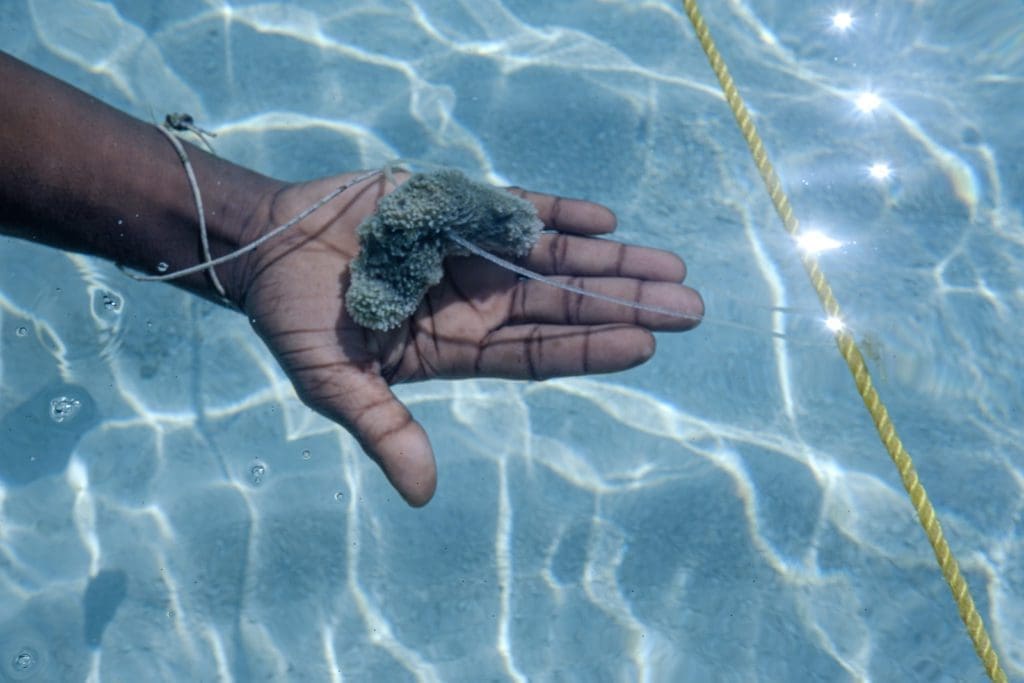We waited a few days, between beach surveys and tide calculations, to meet the women working at the ‘Sponge Farm’ here in Jambiani, on the southeast coast of Unguja. We could have met and talked with them ‘on dry land’ under the reassuring shade of a palm tree, but the desire to understand, know, and experience was much stronger than the heat. For this reason, after a half-hour walk along the shoreline under a sun that was already scorching in the early morning hours, we joined them at their usual place of work. They were chest-deep in turquoise water a few hundred metres from a shore of white sand so fine it looked like dust where, in a religious silence, the coral reef drew a white line on the horizon. Careful not to step on the innumerable urchins that stain the seabed – some the size of a balloon in a shimmering cardinal colour, others smaller and more insidious – we were even more concentrated in uncoordinated movements for fear of getting our equipment too wet.
Sponge farming is one of those activities that is as simple as it is complex here on the island. The result of a subtle and delicate balance between atavistic harvesting techniques and the reference ecosystem, sponge farming has recently seen a drastic downsizing due to an abnormal death of these organisms that began to populate our planet at the dawn of time, around 560 million years ago. Not too much speculation has been made so far about the reasons for this process, but experts from the Marine Cultures (an organization that has been involved in the preservation and entrepreneurial development of women farm workers since 2009), although they do not have firm data, believe it may be caused by an external pathogen due (perhaps) to the monoculture pursued so far. Environmental pollution, microplastics, and an increase in ocean temperature are assumptions cautiously considered.
Zainabu, a single mother, is waist-deep in crystal-clear water and appears to us like a small vision: wrapped in a veil of the same turquoise colour as the sea, she looks like a tiny emissary of this extraordinary ocean. With the delicacy and firmness that only a mother knows, jealous of her few working tools of which her smile is a part, every day, she takes care of these organisms that take from nine months to a year to develop. Zainabu sees them grow and die, knowing that the ultimate goal will be to make them qualitatively attractive for hotel shops and market stalls for distracted tourists.
Zainabu’s work, like that of the many women immersed up to their chests in this crystal-clear water that no agency brochure will ever be able to make real, should not be considered as a mere economic source. In the fragile environmental landscape, the silent work of these women makes them custodians of a fundamental heritage for the development of the local community and the preservation of the natural balance of a habitat that is constantly under pressure.



